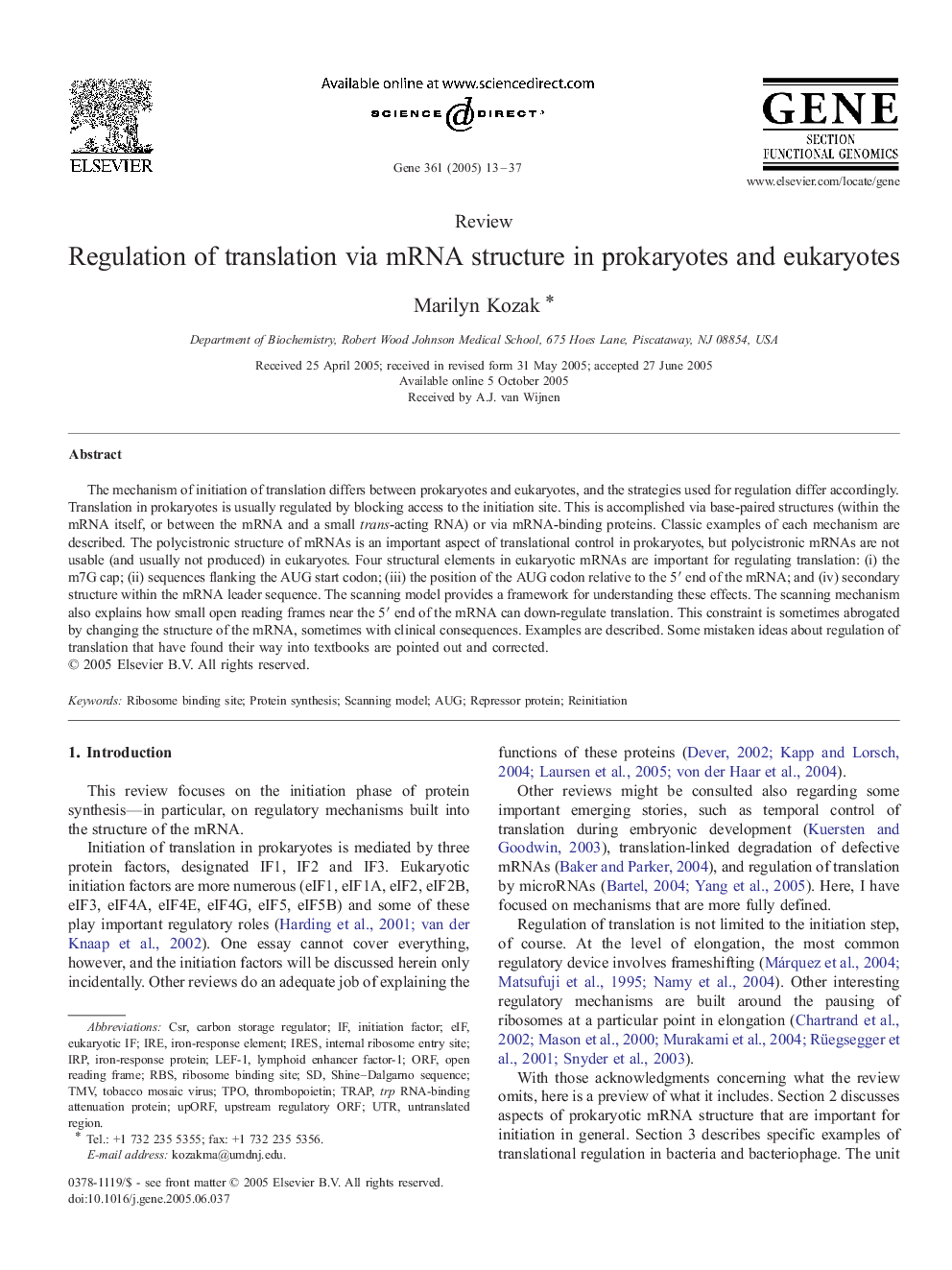| کد مقاله | کد نشریه | سال انتشار | مقاله انگلیسی | نسخه تمام متن |
|---|---|---|---|---|
| 9126846 | 1569963 | 2005 | 25 صفحه PDF | دانلود رایگان |
عنوان انگلیسی مقاله ISI
Regulation of translation via mRNA structure in prokaryotes and eukaryotes
دانلود مقاله + سفارش ترجمه
دانلود مقاله ISI انگلیسی
رایگان برای ایرانیان
کلمات کلیدی
IRESUTRShine–Dalgarno sequenceScanning modelLEF-1AUGtrp RNA-binding attenuation proteinIRETMVTPOIRPCSRTRAPRBSORFeIF - EIFReinitiation - تجدید حیاتThrombopoietin - ترومبوپوتیینribosome binding site - سایت اتصال ریبوزومinternal ribosome entry site - سایت ورودی ریبوزوم داخلیProtein synthesis - سنتز پروتئینInitiation factor - عامل آغازگرLymphoid enhancer factor-1 - عامل افزایش دهنده لنفاوی 1open reading frame - قاب خواندن بازuntranslated region - منطقه غیر ترجمهTobacco mosaic virus - ویروس موزائیک توتونRepressor protein - پروتئین رپرسور
موضوعات مرتبط
علوم زیستی و بیوفناوری
بیوشیمی، ژنتیک و زیست شناسی مولکولی
ژنتیک
پیش نمایش صفحه اول مقاله

چکیده انگلیسی
The mechanism of initiation of translation differs between prokaryotes and eukaryotes, and the strategies used for regulation differ accordingly. Translation in prokaryotes is usually regulated by blocking access to the initiation site. This is accomplished via base-paired structures (within the mRNA itself, or between the mRNA and a small trans-acting RNA) or via mRNA-binding proteins. Classic examples of each mechanism are described. The polycistronic structure of mRNAs is an important aspect of translational control in prokaryotes, but polycistronic mRNAs are not usable (and usually not produced) in eukaryotes. Four structural elements in eukaryotic mRNAs are important for regulating translation: (i) the m7G cap; (ii) sequences flanking the AUG start codon; (iii) the position of the AUG codon relative to the 5â² end of the mRNA; and (iv) secondary structure within the mRNA leader sequence. The scanning model provides a framework for understanding these effects. The scanning mechanism also explains how small open reading frames near the 5â² end of the mRNA can down-regulate translation. This constraint is sometimes abrogated by changing the structure of the mRNA, sometimes with clinical consequences. Examples are described. Some mistaken ideas about regulation of translation that have found their way into textbooks are pointed out and corrected.
ناشر
Database: Elsevier - ScienceDirect (ساینس دایرکت)
Journal: Gene - Volume 361, 21 November 2005, Pages 13-37
Journal: Gene - Volume 361, 21 November 2005, Pages 13-37
نویسندگان
Marilyn Kozak,